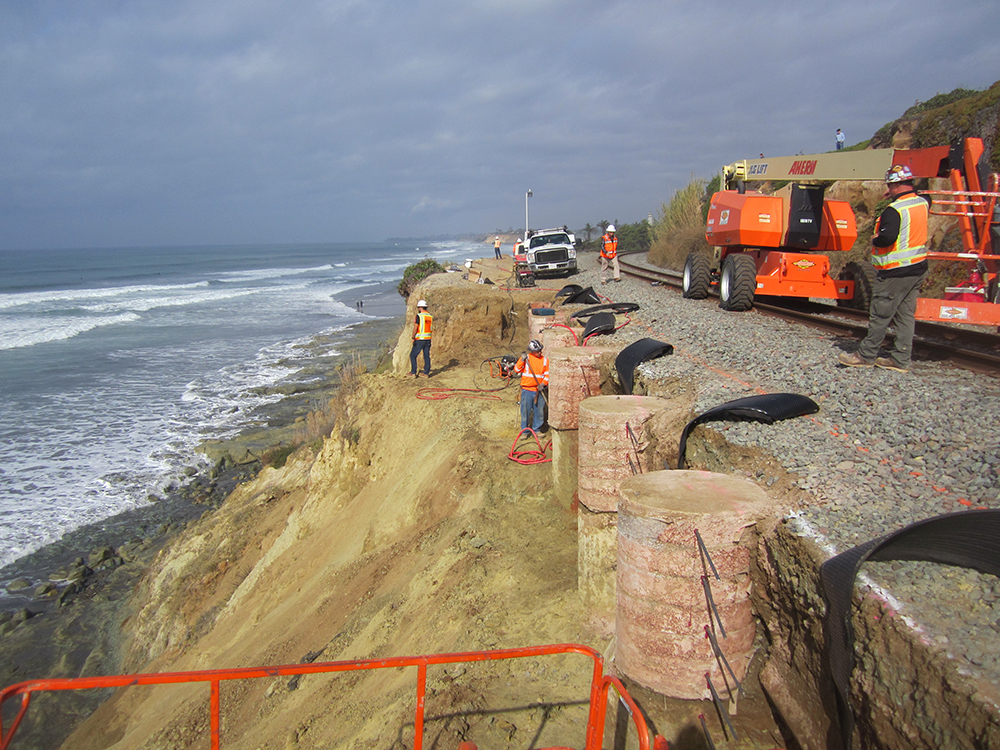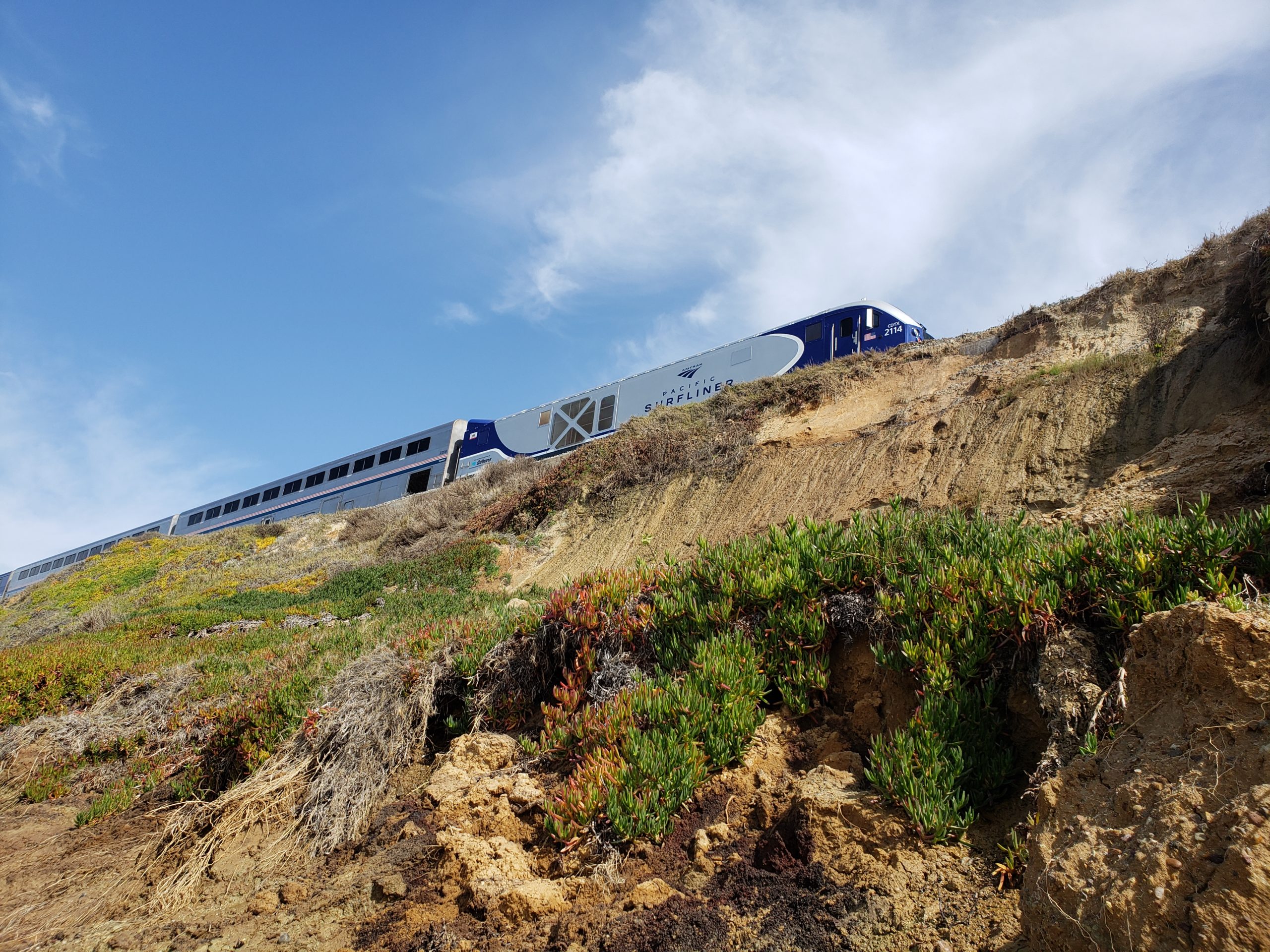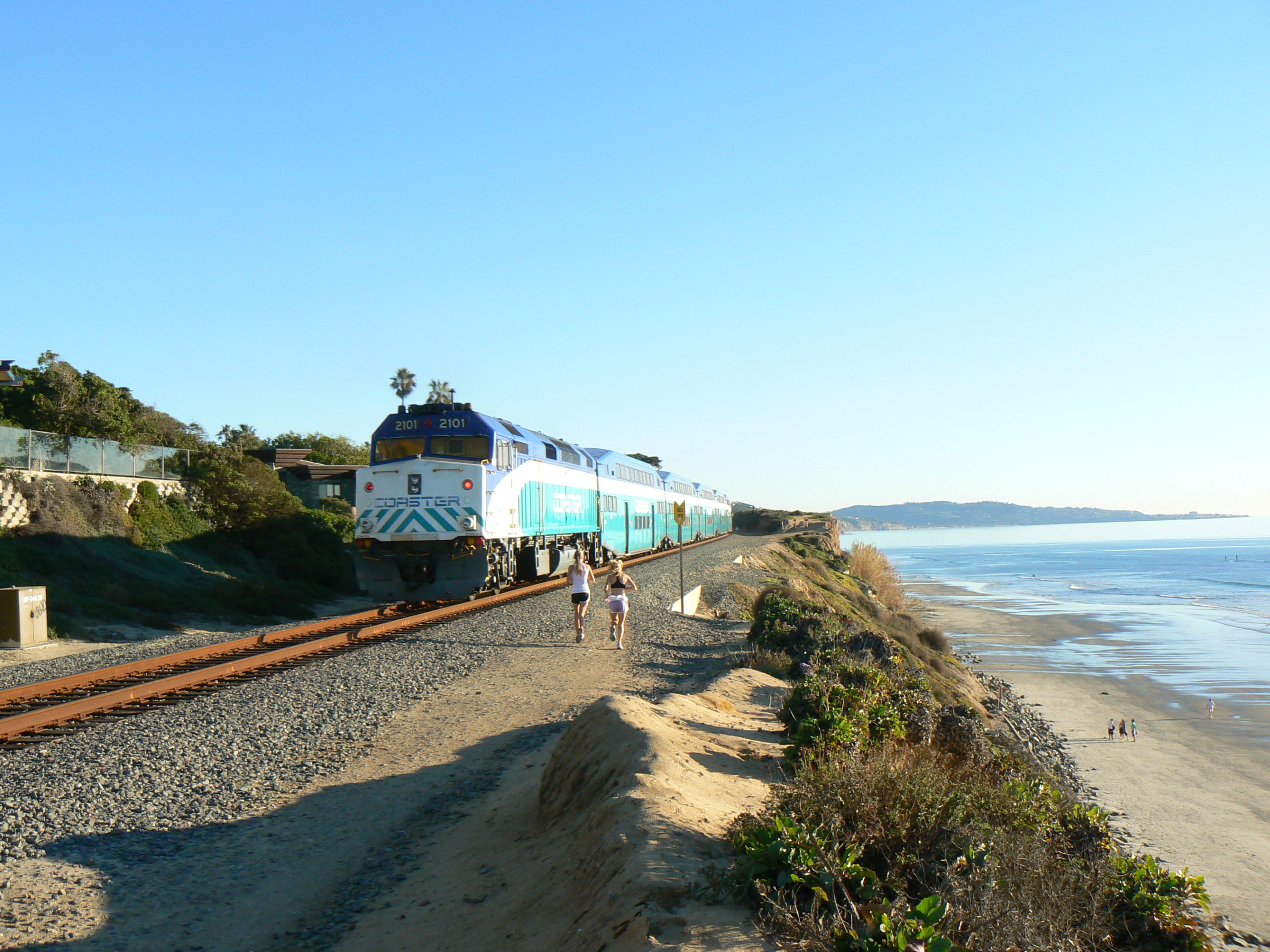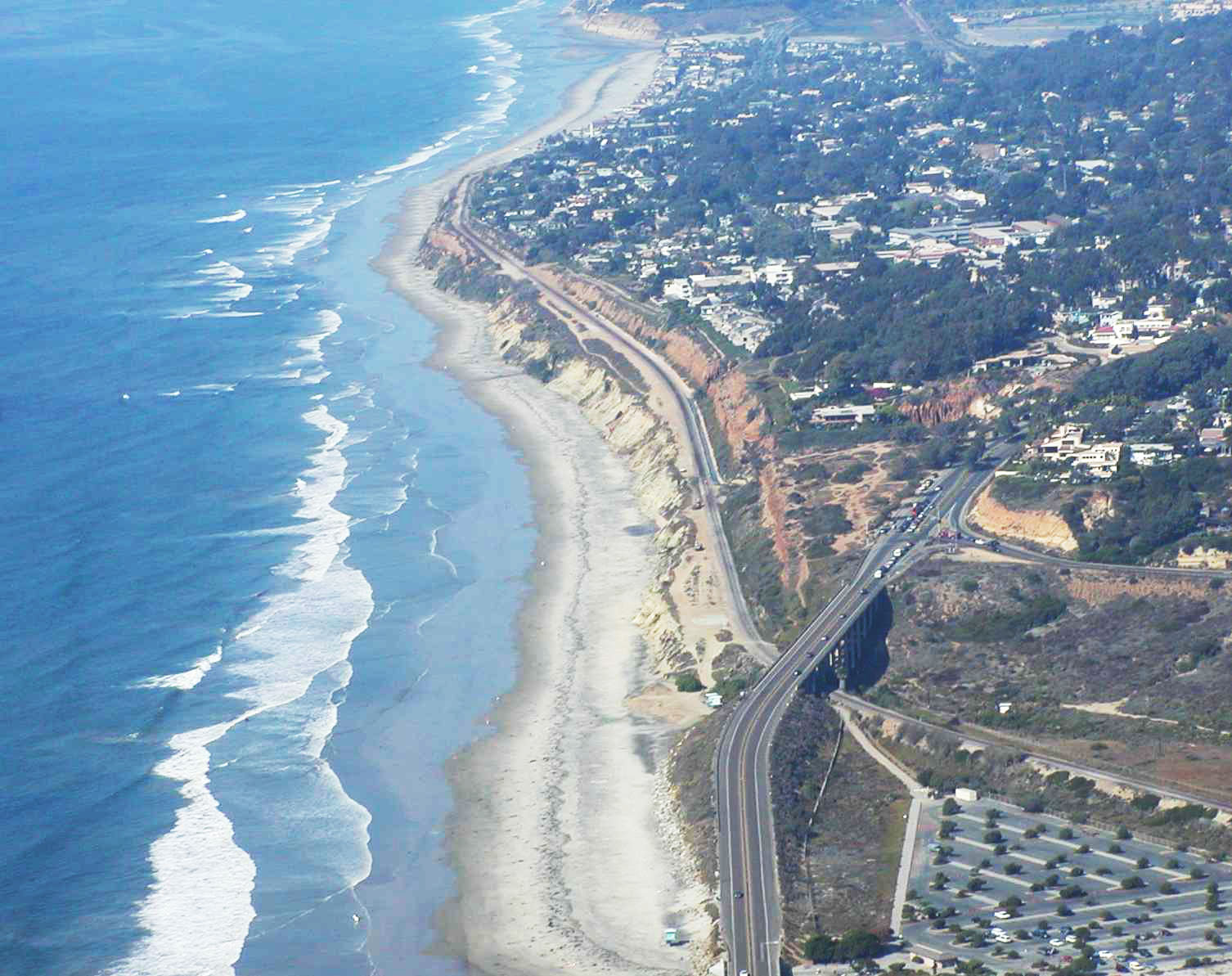The Project.
The North County Transit District/Amtrak route is a scenic one as it travels between the surf and coastal bluffs. Beautiful for the rider, unless the train is stopped due to the coastal bluff deterioration, slope failures and landslides that occurred adjacent to the railway, and prevented the trains from passing through.
Client:
HNTB
Owner:
North County Transit District
Location:
Del Mar, CA
Services:
- Geotechnical Engineering
- Geotechnical Testing
Project Fact:
One of several peer recognitions is the Geotechnical Project of the Year from American Society of Civil Engineers, Region 9.
The Leighton Solution.
In April 2001, a 40-foot section of concrete retaining wall collapsed, a wall that had lined the top of the Del Mar Bluffs at 7th Street. The failure, which had been identified in Leighton’s just-completed Del Mar Bluffs Geotechnical Study as one of the highest risk areas, consisted of three wall sections approximately 60 feet above the beach.
To keep trains running atop the bluffs, the North County Transit District (NCTD), which owns the tracks, declared an emergency and approved spending $1,050,000 to design both immediate and long-term repairs to the portion that gave way. In addition, funding for mid-term measures, that could cost as much as $8.2 million on other high-risk portions of the bluff, were also approved. These measures are intended to ensure that the Amtrak and Coaster trains that run along the 1.6-mile-long section will be able to do so for the next 20 years.
In response to the emergency, Leighton assessed the geological conditions and provided emergency repair alternatives for local agency review. With the selection of a shear-pin stabilization method, a “fast-track” analysis, the design and review period was successfully completed within 30 days. Construction of the stabilization system, twelve 60-foot-deep shear pins with tie-backs, was then successfully completed within 45 days.
Prior to this emergency, a Leighton geotechnical report had informed the NCTD that saturation from groundwater is/was the biggest problem facing Del Mar’s bluffs. The report predicts that, without reinforcing measures along at least half of their length, the bluffs will erode another 12 feet within the next 20 years, making them even more fragile. Specifically, Leighton’s report had identified the area (at 7th Street) that failed as a high-risk zone.
The railroad tracks were first built along the bluffs in 1910. Because of population growth, runoff from irrigation has increased tremendously, saturating Del Mar’s bluffs with groundwater and causing them to erode faster than they otherwise would. (Leighton’s study showed that normal rainfall in the San Diego County would dump about 10 inches on Del Mar Bluffs, but with the increased runoff, water reaching the bluffs each year is equivalent to between 100 and 200 inches of rain.)
Improvements constructed included additional shear pins, soil cement improvements, sea walls at the base of the bluffs, reinforcing the bluffs, and improving surface and sub-surface drainage, all with site aesthetics as a key element.
The selected stabilization method included additional shear pins connected at the top by a reinforced grade beam with tie backs. Where improvements are exposed they have been boulder-scaped to match the adjacent bluffs. Site stabilization also included the installation of a deep cut off subdrain which was outletted by boring through the bluff to the beach below and exiting through a boulder-scaped outlet.
Leighton has continued to provide geotechnical services since that first report, including the Thanksgiving 2019 failure.





